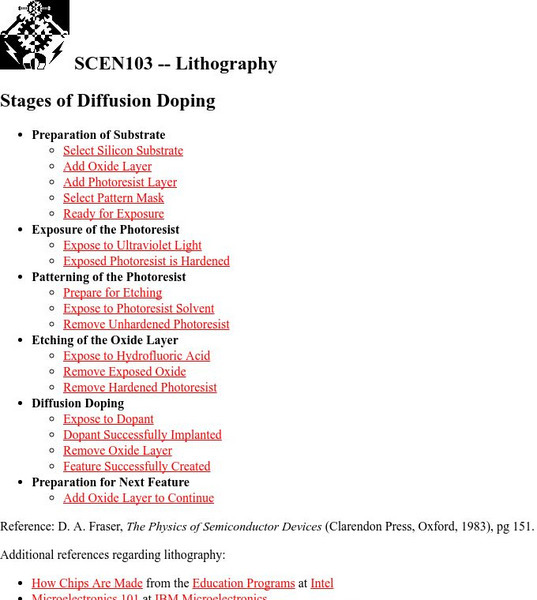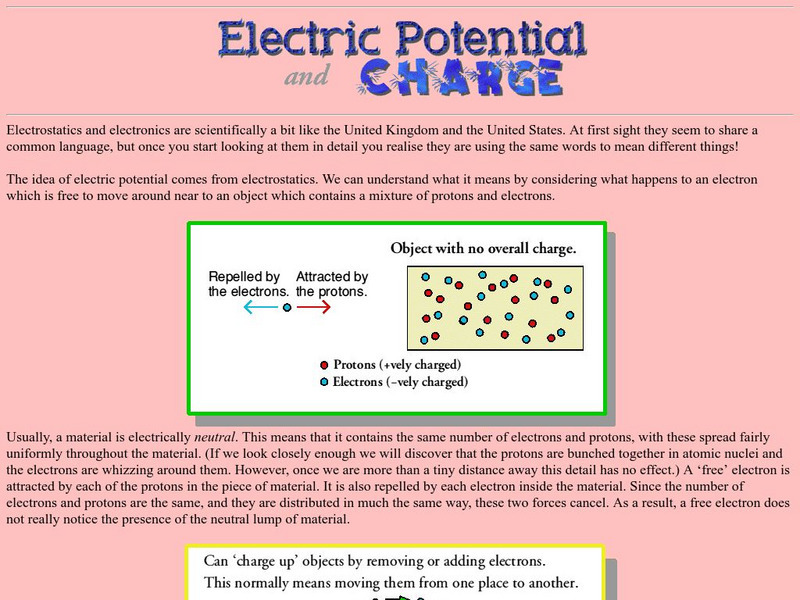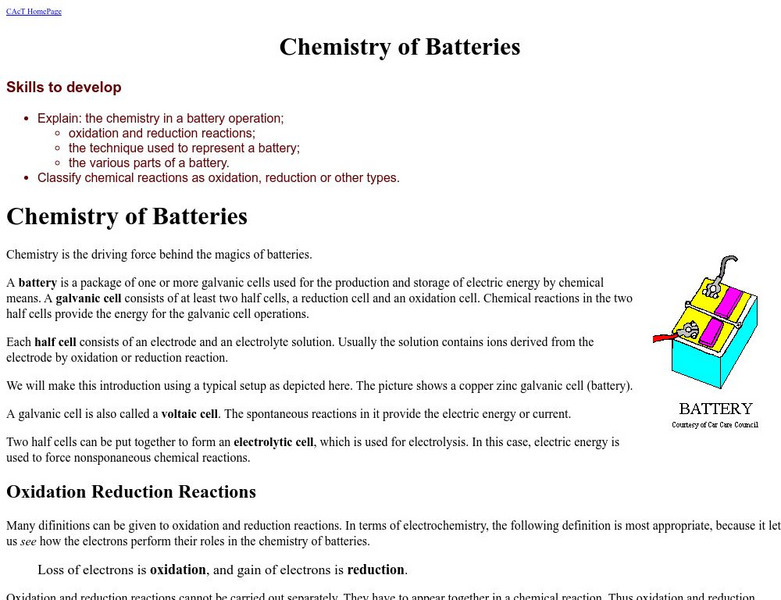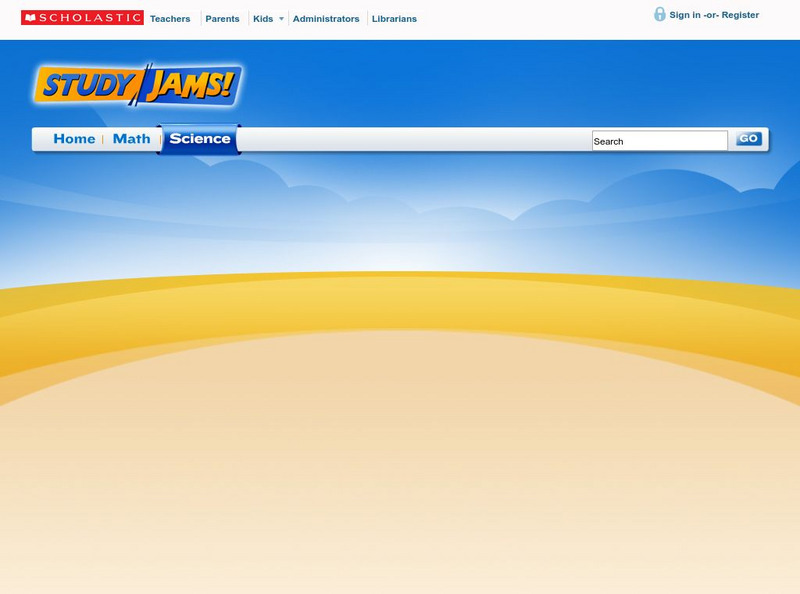Wikimedia
Wikipedia: Louis Victor De Broglie
A brief biography of Louis-Victor de Broglie, including a concise review of his studies.
Wikimedia
Wikipedia: Max Planck
Discover the life and accomplishments of the great German scientist Max Planck. This site also provides links to sites explaining theories and scientific terms that are associated with Planck.
Concord Consortium
Concord Consortium: Molecular Workbench: Electrons in Atoms and Molecules
A model that explores why electrons are so important in chemistry. Investigate electron clouds, what happens when two atoms come together, and chemical polarity.
Lawrence Berkeley National Laboratory
Berkeley Lab: Particle Adventure: The Standard Model
An introduction to the Standard Model, a theory which attempts to explain atomic structure using leptons, quarks, and force carrier particles.
Other
University of Delaware Physics Department: Lithography
University of Delaware Physics Department provides this indexing page for a slide show presentation.
Other
Univ. Of Delaware Physics: More Semiconductor Physics
The University of Delaware Physics Department provides this site from a site titled "Silicon, Circuits, and the Digital Revolution," here is a series of four pages which explain the details behind how semiconductors work. An introduction...
Other
Erik's Chemistry Page: Electronic Structure of Atoms
A description of quantum theory, the Bohr model of the atom, the quantum mechanical atom, the Scrodinger equation, and quantum numbers.
Other
Kidstorm: Lightning
Learn about lightning formation and lightning safety with this detailed webpage.
State University of New York
State University of New York: Electron Configuration of Ions
The following simulation displays electron configurations for elements in relation in relation to the element's position on the periodic table.
University of St. Andrews (UK)
University of St. Andrews: Physics and Astronomy: Electric Potential and Charge
From The Scots Guide to Electronics web site. The meaning of electric potential is described. A combination of diagrams and words are used to explain this difficult concept without the use of mathematics. Very well done!
University of Waterloo (Canada)
Computer Assisted Chem. Tutorial/chemistry of Batteries
A superb explanation of how a battery works. Discusses the associated chemistry which explains how a battery produces a voltage. Includes a series of "Confidence Building Questions."
Quia
Quia: Chemical Bonds (Ionic and Covalent) Quiz
This is 21-question multiple choice quiz over chemical bonds was written for a 7th-grade science class.
University of Colorado
University of Colorado: Ph Et Interactive Simulations: Signal Circuit
Learn how electricity flows through a circuit by watching how the electrons move.
Alabama Learning Exchange
Alex: Emission Spectrum
We will reintroduce the students to the electromagnetic spectrum and visible light. We will talk about the states of electrons(ground and excited). The teacher will show a video link (Electrons in Atoms). We will then perform the science...
Scholastic
Scholastic: Study Jams! Science: Matter: Atoms: Protons, Neutrons, Electrons
A video and a short quiz on the parts of an atom, the periodic table, and molecules.
Sophia Learning
Sophia: Interpreting Electron Configurations: Lesson 3
This lesson will demonstrate how to identify an element and state the number of valence electrons given its electron configuration. It is 3 of 3 in the series titled "Interpreting Electron Configurations."
Sophia Learning
Sophia: Jj Thomson: Lesson 2
This lesson explains JJ Thomson's experiments that led to the discovery of the electron. It is 2 of 3 in the series titled "JJ Thomson."
National Association of Geoscience Teachers
Nagt.org: A Remote Access System for Education
In 2003, the University of Minnesota's Electron Microprobe Laboratory implemented a new system for remote research and education via the Internet. The remote-access system allows real-time access to our microprobe using only standard web...
American Chemical Society
Middle School Chemistry: Protons, Neutrons, and Electrons
Explore the particles that make up atoms: protons, electrons, and electrons.
Famous Scientists
Famous Scientists: Walter Schottky
Learna about the life and work of the German physicist who played a major role in developing the theory of electron and ion emission phenomena.
Famous Scientists
Famous Scientists: Werner Heisenberg
Find out about German scientist, Werner Heisenberg, a theoretical physicist who was one of the key pioneers of quantum mechanics.
Other
Swiss Federal Institute of Technology: Pauli's Principle
Provides information concerning Wolfgang Pauli's Exclusion Principle. Contains the periodical table of elements.
CK-12 Foundation
Ck 12: Plix: Create an Atom: Electrons
[Free Registration/Login Required] Explore electrons by dragging the subatomic particles to the correct location to create a beryllium atom.
CK-12 Foundation
Ck 12: Physical Science: Electron Cloud Atomic Model
[Free Registration/Login may be required to access all resource tools.] Features the electron cloud atomic model and atomic orbitals.




















